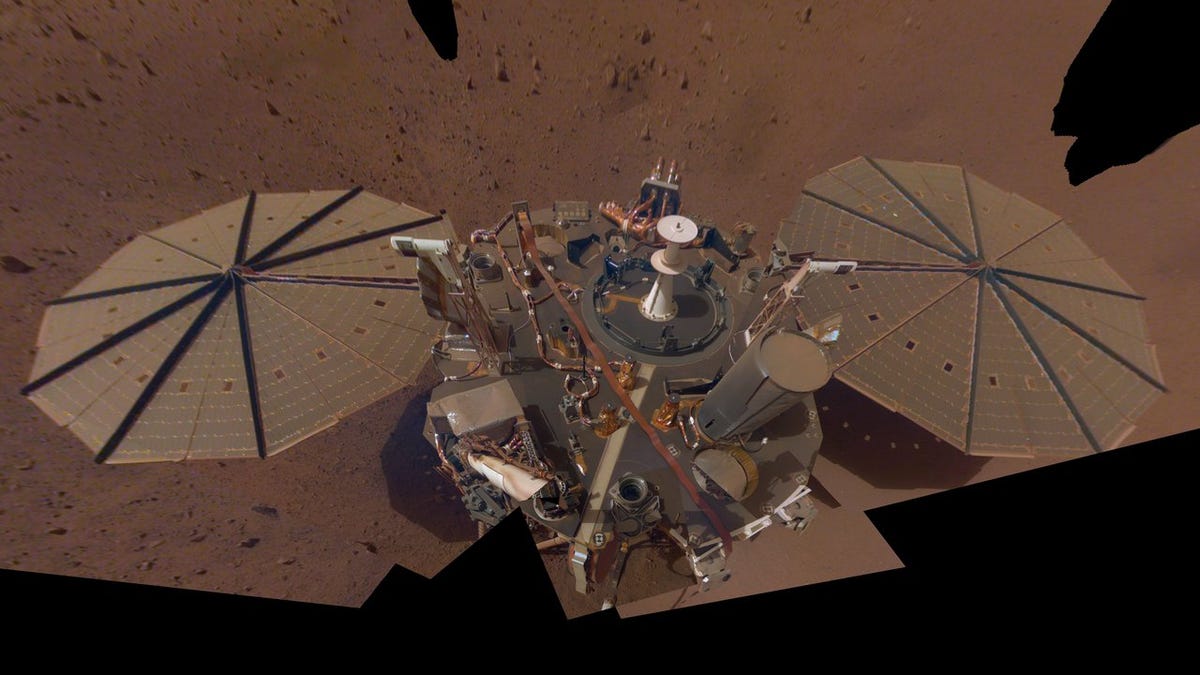NASA's Groundbreaking Mars Insight Lander Mission Meets Dusty Demise
Farewell, InSight. The intrepid lander forever changed our understanding of the red planet.
The retirement of a major space mission is an occasion for both sadness and gratitude. On Wednesday, NASA called an official end to the Mars InSight lander's mission to study the interior of the red planet. We've known this day was coming, ever since it became clear dust was choking out InSight's power supply by blocking light from reaching its solar panels.
"Mission controllers at the agency's Jet Propulsion Laboratory in Southern California were unable to contact the lander after two consecutive attempts, leading them to conclude the spacecraft's solar-powered batteries have run out of energy -- a state engineers refer to as 'dead bus,'" NASA said in a statement.
The lander initially didn't respond to communications from Earth on Dec. 18. "The lander's power has been declining for months, as expected, and it's assumed InSight may have reached its end of operations," the agency said at the time. That prediction has now come true. It was last in touch on Dec. 15.
"We've thought of InSight as our friend and colleague on Mars for the past four years, so it's hard to say goodbye," said InSight principal investigator Bruce Banerdt of JPL. "But it has earned its richly deserved retirement."
InSight arrived in the Elysium Planitia region of the red planet on Nov. 26, 2018. The stationary lander may not have glowed with the same glamour as NASA's charismatic Mars rovers, but it has revolutionized our understanding of the formation and evolution of the planet. One of InSight's catchphrases was "Taking the vital signs of Mars."
The lander outlived its original mission and received an extension through the end of 2022. InSight hit some speedbumps along the way, notably when its burrowing "mole" failed to make headway into the ground. The mole was supposed to take the planet's internal temperature, but NASA abandoned the effort in early 2021.
Some of InSight's greatest insights have come from its seismometer, which has logged marsquakes, including an absolute unit of a shaker earlier this year. The data InSight collected will continue to keep scientists busy for years to come.
Mars dust was the culprit in the demise of NASA's dearly departed Opportunity rover, and struck again when it came to InSight. The agency had hoped a whirlwind would come along and blow the layer of dust off the lander's solar panels, but that never happened. As power dwindled, NASA turned off science instruments and prioritized the work of the seismometer.
InSight delivered a final selfie earlier in 2022, and the image showed just how thick the dust had gotten. The lander's final image from Dec. 11 showed the rocky Martian landscape and the dome-covered seismometer on the ground. Along with the image, NASA wrote a poignant message from InSight's point of view: "My power's really low, so this may be the last image I can send. Don't worry about me though: my time here has been both productive and serene."
Rest well, InSight. You were a good lander.


